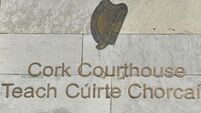Questions on unit not just about salaries
THE latest row over lucrative contracts for backroom Government officials, this time in health, is not just centred on the country’s dire financial situation.
An equally complex political football — chronic waiting lists and overcrowded emergency departments — is just as important to the dispute.
Last summer, Health Minister James Reilly created the special delivery unit. The unit — effectively a mini-department within the Department of Health — has an €85m annual budget. It employs 17 people and is tasked with cutting waiting times for both outpatient and inpatient hospital appointments.
In addition, the group, led by chief operating officer Tony O Brien, bids to reduce trolley count rates.
Martin Connor, who spends two weeks a month as a research fellow at Stanford University in California, was appointed last June to oversee the “scheduled care” waiting list situation.
He was paid €90,000 by the unit between June and December last year, before receiving a three-year contract worth €480,000.
On Wednesday, irishhealth.com revealed a second €164,000-a-year official, Lis Nixon of Lis Nixon Associates, had been appointed to focus on reforming trolley crisis.
A resulting political furore has focussed on whether or not these two individuals — who are on salaries €68,000 to €72,000 more than the government adviser pay cap — are advisers or expert consultants.
Dr Reilly is insistent both are the latter as they are implementing policy instead of advising on it, and as such the pay cap is irrelevant.
However, outside this dispute, the work of the special unit to date is worth examining.
The unit’s first priority was to ensure no one was on waiting lists for more than a year by the end of 2011, and by no more than nine months by Dec 2012.
It has had some success on this ground. Last summer, the number of people waiting this length of time was 2,500, falling to 360 by December.
However, by the end of February, it had risen again to more than 1,200.
The number of people on waiting lists in general has also remained static at best, with 56,020 on any hospital waiting list last July compared to 59,387 at the start of this year.
Similar difficulties are apparent in terms of the trolley count target.
Although trolley counts were down an average of 27% in Jan 2012 compared to Jan 2011, facilities like Cork University Hospital, Beaumont, Our Lady of Lourdes in Drogheda, and Tallaght still face significant backlogs. The percentage of patients seen within six hours of arrival, irishhealth.com also noted, fell from 69% to 65% in the first six months of the special unit.
At the Irish Medical Organisation’s annual general meeting last weekend, the union’s consultants group warned the unit project had hit unexpected snags. Dr Trevor Duffy explained that in hospital meetings, unit officials tell doctors to open beds so patients can be treated more quickly, meaning waiting lists and trolley counts fall.
Dr Duffy said in these same meetings, local hospital management smiles and nods to the unit, then tells doctors the beds will remain closed as no money is available to open them.
On RTÉ’s Morning Ireland yesterday, European Affairs Minister Lucinda Creighton, of Fine Gael, claimed the revelation that Dr Reilly had appointed another €164,000-a-year external “adviser” to his unit had been “erroneously reported” by this newspaper. It is ironic that Ms Creighton’s claim is in itself “erroneous”, and misses the key reason why taxpayers will have greeted the news with a less than warm welcome.
The Irish Examiner reported that Ms Nixon had been appointed in an “executive function” role, and would be “implementing policy, not providing advice”. The legitimate concerns raised in the article were:
* That another unelected official has been appointed on a lucrative taxpayer-funded salary at a time when the State faces serious financial problems;
* That the appointment took place externally because none of the unit’s existing 16 staff or the 100-plus health service managers and administrators on over €100,000 a year were considered up to standard.
In the land of political smoke and mirrors, it seems even the politicians find it difficult to keep track of what are and are not the facts.
Whether this criticism will be equally relevant for waiting lists and trolley counts when the delivery unit is finished its work, and whether the lucrative contracts for new officials will be seen as good value or more money into the health service black hole, is what is really at the centre of this week’s debate.











